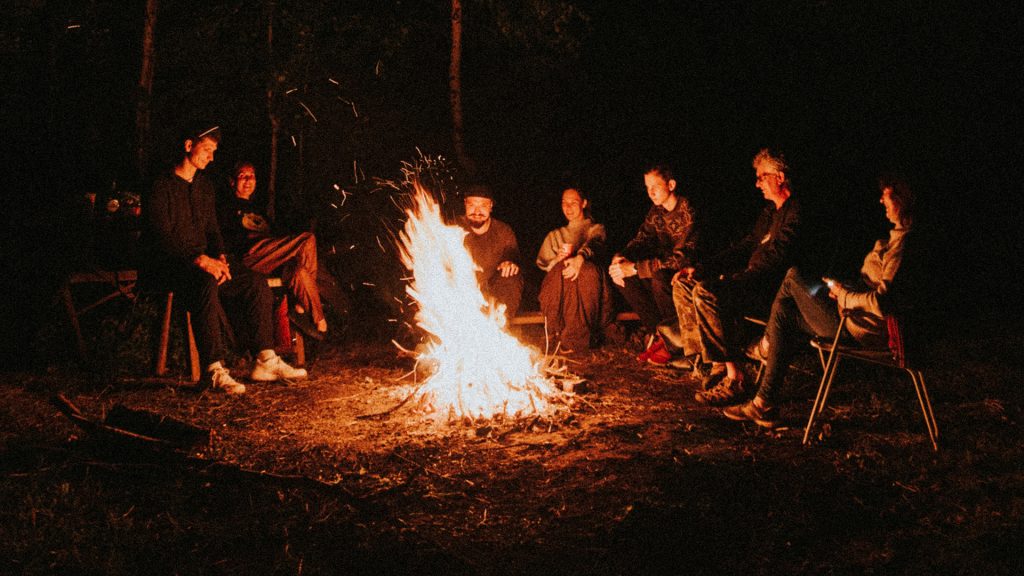If you’re a growth marketer working with news, media, or brands, you here for tactics and workflows that take you from “meh” to measurable results. Over the past decade-plus, I’ve grown digital audiences across newsletters, podcasts, SEO, and video, sometimes tripling our numbers and sometimes learning the hard way what doesn’t work. This is a real-world playbook – full of practical strategies and honest missteps that you can learn from.

How to drive measurable growth through SEO marketing
When people ask how I’ve driven audience growth through SEO, they usually want a magic bullet. But there isn’t one. I don’t have a magic wand, but I do build systems, write for humans (and AI), test, tweak, and re-evaluate. While there’s no one-size-fits-all blueprint, there are patterns that work – especially if you’re willing to be useful, consistent, and just a little obsessive. Here’s what’s helped me move the needle in real, measurable ways.
TLDR – How I actually drive SEO growth
- Build systems, not one-offs. Repurpose content (podcasts → blogs → shorts) through clear workflows.
- Write for people. Focus on real search intent – not trends or fluff.
- Record everything. Video is versatile fuel for future content.
- Audit + iterate. Analyze what works, double down, and refine.
- Skip “quick wins.” SEO is long-term. Good content + strategy = results.
- Core playbook:
- Research niche, high-intent keywords
- Write deep guides + supporting articles
- Link them together
- Add quotes, stats, and lived experience
- Use TLDRs + FAQs for both people and bots
- Want AI to quote you? Use the proper schema, original content, and structured formatting.
- Low authority? Gain it – guest post, comment, partner, and participate online.
Walk me through your experience growing digital audiences. What were your biggest wins and how did you achieve them?
Some of my biggest wins have come from building pipelines that touch everything from podcasts to SEO. By having a clear plan from, say, podcast development, to repurposing that content for SEO, I’ve created some ultra-high performing hits.
I generally believe that content should be people-centered and legitimately helpful. So I try to consider what people are actually searching for, trying to learn, looking to understand – and build content geared toward answering those questions.
Additionally, I generally believe that, these days, a fundamental best practice is to record everything, preferably in video, and leverage those recordings in content creation – whether that’s recording interviews, events, calls, meetings, etc. Having that library of video gives me options when it comes to the narratives I want to build and the stories I want to tell.
Finally, I think that analyzing and iterating on content is critical. Regularly reviewing the performance of content and iterating on top-performers is key to moving the needle organically.
All of this, together, is what has helped me move the needle in my biggest wins – such as increasing YouTube watch time by 329%, ranking at the top of Google, or getting referenced by ChatGPT.
What SEO tactics have you used to drive website traffic? How do you balance quick wins with longer-term search strategies?
I honestly don’t really believe in quick wins – especially with SEO. I would caution people against hiring an SEO “expert” who promises quick wins. SEO is an in-depth, long, and, really, never-ending process. If you are capitalizing on super niche keywords or phrases, or build a really killer article, you can have your content showing up at the top of Google and getting clicked on rather quickly – and I have, several times – but that’s never a guarantee.
Really moving the needle on SEO requires a few key things:
- Audience and keyword research
- In-depth deep-dive articles.
- Shorter, support articles.
- Real insights: Unique quotes, personal experiences, first-party data
- Backlinking – if you don’t have much authority
- The proper schema – including TLDR lists and FAQs
So, for instance, you might find that your core audience desires information on local government and elections. So you might craft a deep, detailed article about candidates for city council – which goes over all the candidates. Then, you might create smaller, breakout articles on each candidate, individually. And you would link all these articles to each other.
And all of your articles should, ideally, have exclusive quotes, proprietary statistics, and other highly relevant and actionable insights that cannot be found anywhere else.
They should also include at least one TLDR up at the top. If it’s a super long article, I’ll generally put a TLDR at the top of every section. And then there should be a FAQ at the bottom of every article, as well. And this isn’t just for SEO, this is actually for AIO, as well. This is the type of stuff that AI loves to reference and highlight – and the TLDRs and FAQs help them understand your articles’ content and more easily reference it.
Something else both search engines and AI bots love is “authority” and “social proof” – so if your domain doesn’t have a high authority, or you aren’t being mentioned outside of your own website, you may need to build partnerships with those who do have high authority and make sure your website is being mentioned elsewhere online.
That might mean being a guest commentator on established blogs or media outlets. It might mean leveraging something like HARO (Help A Reporter Out). It might mean sharing your valuable, insightful content on platforms like Reddit or Substack to foster conversation and build name recognition.
In regard to the keyword research, this should be done prior to any articles to inform the kind of content you’re building, or how you’re building it. You always want to identify and create content geared toward high-performing, low-competition keywords. That means leaning into niches.
All in all, this takes time to build up and see results, but it is a more sure-fire method for ranking well and getting quoted by AI than any “silver bullets” or “magic tools” you’ll be offered.

How to drive measurable growth through email marketing
Growing an email list isn’t about plastering “Subscribe Now” buttons everywhere. It’s about understanding where attention lives, what drives someone to give you access to their inbox, and how to keep that trust once you’ve got it. I’ve built email growth strategies across B2B and B2C – from webinars that quietly pulled in hundreds of leads, to newsletter CTAs that only worked because they showed up in exactly the right place.
Here’s what’s actually moved the needle for me – and what I’m still figuring out as audiences (especially younger ones) move away from email entirely.
TLDR – How I’ve grown email lists and engagement
- Webinars = email gold. Webinars (essentially gated livestreams) consistently curate hundreds of subs per event. B2B or B2C, the format just needs tweaking.
- Contextual CTAs convert. End-of-article prompts (“Don’t miss election coverage – sign up here”) outperform generic asks.
- Segmentation matters. Tailored newsletters + smart cross-promotion = higher engagement and multi-newsletter signups.
- Social ≠ signups. Social is for discovery. Email growth happens post-engagement, not from random posts.
- Future-proofing is overdue. Gen Z isn’t checking email. News orgs and brands need to rethink what the “next newsletter” even is. (My gut take: Playlists.)
- Ideal ESP? One that is flexible enough to build a variety of email content, and granular enough to provide detailed user behavior insights. I’ve found Mailchimp and Hubspot to both be great.
Can you share specific strategies you’ve used to increase newsletter subscribers and engagement? What were the results?
One of the biggest things I’ve done to increase subscribers was hosting webinars. Historically, I’ve seen this work well at several places I’ve worked. Each webinar generally netted at least 250+ new emails for our email database. I’ve also found that having CTAs in relevant places – such as in sidebars or at the end of articles – can increase subscriber growth.
Webinars, of course, are very B2B-oriented. At a B2C company, webinars would probably look and function a bit differently than you might think of a typical webinar. They might even be called something else entirely. For instance, if you’re a news outlet, you could host and stream a town hall meeting with two local council members, where residents have the chance to talk to them about issues important to them – and require people to sign up for a city politics newsletter in order to access it. That’s the same concept, essentially, but tweaked specifically for a news outlet.
I think most any company can approach gated livestreams like this and provide valuable content that their customers would be willing to register and show up for.
That said, I think social media, as a whole, has generally been less successful for growing newsletter subscriptions. There’s really a clear funnel. Social media is good for product discovery. And then email capture is best after someone has engaged with the product (or wants to engage with the product, in regard to signing up for a webinar).
So, for instance, having a specific CTA at the end of an article about a local election that says “don’t miss important election coverage you need for voting, sign up here to get it delivered directly to your email” can work quite well – but it does mean you need to actually have a newsletter focused on elections. And that’s part of making things work too: Deep segmentation. And then highlighting adjacent newsletters or content within the newsletters people sign up for, so that they sign up for those, as well. It’s a balancing act, most definitely.
I also think something to consider is what happens when you start running into audiences who don’t use email. I interviewed a local musician recently, and she mentioned that her brother is in military recruiting – and he’s discovering that Gen Z does not do email. They don’t type. They are much more social media, tactile, button-pressing kind of stuff. They communicate in emojis and memes.
Many brands, media outlets, and news organizations, do have a bit of a problem, in my experience, with generally being geared toward, or consumed by, older audiences. So thinking about what needs to change as they’re aging out is critical. And I’m not sure what the “newsletter” for Gen Z is, yet. Probably a playlist on Spotify or something.
Describe your experience with email service providers (ESPs). Which have you used, and what did you like/dislike about them?
I’ve used mostly Hubspot and Mailchimp. I think they’re largely the same, fundamentally. They each have their own way of doing things, but generally have the same capabilities and functionality. Mailchimp might feel a little more modern and robust – for email marketing specifically.
The key thing for me in any ESP is being able to craft a variety of email content and getting the deepest, most granular performance data possible. One of my favorite things is being able to see what links were most clicked on in an email – as this helps me understand what content and hooks people are connecting most with.

How to drive measurable growth through content marketing
Content marketing only works if people actually care. That means your job isn’t just to hit keywords or publish regularly – it’s to understand what your audience is looking for, where they’re dropping off, and how to earn their trust over time. I’ve used tools like GA4, Search Console, and heat maps to chase real signals – not vanity metrics – and build content that grows with the audience it serves. Here’s how I approach it to make the numbers move.
TLDR – How I drive growth with great content
- Impressions ≠ impact. I use Search Console to spot high-impression, low-click queries – then build content that answers what people actually want.
- Heat maps + retention = gold. I track where users click and bounce to diagnose drop-offs and missed connections.
- Split test everything. One variable at a time. Get creative. Iterate on top performers.
- Get in the room. Embed yourself in the communities you write for – because presence leads to relevance, which leads to resonance.
- Real connection scales. The more useful and human your content, the more people amplify it for you.
Tell us about a time you used web analytics (such as GA4) to inform a digital marketing or audience growth decision. What insights did you uncover?
I will often use Search Console to identify queries where I’m seeing high impressions, but low clicks. I consider these missed opportunities and will generally try to craft content that specifically addresses that query in the hopes of turning more of those impressions into clicks.
Similarly, I will use click and retention metrics to better understand what people are looking for from us, but where we’re maybe not connecting with them as well as we should be. Whenever heat maps are an option, I try to utilize them. Seeing specifically where people are looking when they decide to hop off a page, or click a link, can be incredibly revealing.
What’s your approach to A/B testing subject lines, newsletter formats, or landing pages? Share any lessons learned.
I am a huge advocate for A/B (aka split) testing. I appreciate that a lot of ESPs, CMSs, and even some social media platforms, now allow for native split testing. Anytime I can do a split test, I like to. The important thing is to only test one variable at a time. When outperformers are uncovered, I will generally utilize that information and iterate on those concepts in future newsletters, landing pages, etc.
One big thing I found out, when testing different email formats, is that when an email comes from an actual person and looks like a regular email, it can have a much higher open and engagement rate than when the email comes from something like marketing@company.com and looks like a newsletter or ad.
How do you ensure content is optimized for both engagement and audience growth?
Engagement drives growth. If you’re optimizing for engagement, audience growth will follow. Engaging content gets shared, seen, and further engaged with. So if you are crafting content that actually serves people and sparks conversations, you will get people engaging and see your audience grow.
If you aren’t doing that, or seeing that born out: Go back to the drawing board, study your target audience, get embedded in their lives and communities, and try again.
It sounds like you believe in being present in the communities you’re targeting. How do you leverage that presence to grow digital audiences?
I think that speaks to the very core of SEO and AIO, honestly. Being embedded in the spaces you’re writing on, talking with people and connecting with them day-to-day, is the best way to develop the content they need and connect with. It’s the best way to get those unique insights and exclusive quotes. It’s the best way to inform and guide your content strategy.
When you’re doing that, people will find you. People will share your content. People will engage with you – not only as a consumer, but often as a facilitator or ambassador.

How to track trends and tackle low-performance, audience stagnation
Trends can spark growth – or waste your time. Plateaus can signal misalignment. I track trends by being embedded in the spaces I’m writing for, not just skimming headlines. And when growth stalls, I don’t panic – I investigate. Data, audience behavior, and competitive context tell you where the real problem is. Here’s how I approach trend-surfing and performance slumps with clarity and purpose.
TLDR – How I spot trends and fix audience stagnation
- Trends need timing + authenticity. I stay plugged in (social, Google Trends) but only act when I can add real value – not noise.
- Underperforming channel? Audit it. Double down on what worked, analyze audience fit, and study competitors. If nothing lands, cut it.
- Not every channel is worth it. If something’s flopping for 3+ months, it might not be your audience’s home. Let it go.
- Audience decline? Run a full audit. Check funnel performance, engagement shifts, content quality, timing, competition, and audience signals.
- Action follows insight. Only after diagnosing the problem do I adjust messaging, formats, or focus.
How do you stay updated with trends in newsletters, social media, and digital content? Can you give an example of a trend you capitalized on?
I generally stay updated on trends by actually being in those spaces – though I also use tools like Google Trends. Trends can be tricky to capitalize on. Generally, if you’re not early, you’re late. And if you’re not authentic in the way you’re engaging with a trend, you can be rejected.
One trend I’ve capitalized on is talking about AI – but in an earnest and authentic way, and providing real actionable insights and ideas. I didn’t just hop on the AI hype train and say “this is good” or “this is bad” – I detailed how I used it in my own work, as well as the concerns I’ve had about its usage.
Describe a time you analyzed data, identified an underperforming channel, and turned it around. How did you approach it?
A few things I would check off my list first: What content did perform well on this channel? I would probably look at doubling down on that. If nothing performed well, I would probably take some time to re-analyze the channel audience to better understand them. I would also look at what competitors are doing. If I see that some of their content is performing well, I might try to emulate it or riff off of it.
But you don’t need to be on every channel. Nor should you be. If a channel isn’t performing well, especially consistently (three months or more), it could be a sign that this channel is not where your audience really is. If that’s the case, you should consider dropping that channel so you can focus your energy on high performers.
When you identify a plateau or decline in audience growth, what’s your first step?
My first step is an audit – analyzing data, audience feedback, competition, and internal actions to pinpoint the bottleneck. Only after this would I craft an action plan (could be a messaging refresh, new content formats, channel realignment, etc.).
In detail, that looks like this:
First, audit the data. Look at analytics: Where is the slowdown happening – traffic, signups, conversions, specific channels? Segment by source: Is it organic, paid, social, referral, or email? Pinpoint the affected funnel stage. Identify patterns: When did the plateau start? Were there changes in content, distribution, algorithm updates, or market factors? Have there been any changes in content quality, cadence, distribution strategy, ad spend, or SEO priorities?
Then, review audience signals. Engagement metrics: Has time on site dropped? Are bounce or unsubscribe rates rising? Content resonance: Is existing content still hitting audience pain points? Are previously successful formats declining? Feedback loops: Review user comments, support tickets, and social chatter for signals of changing interests or frustrations.
Finally, check the competitive landscape. Has a competitor launched a new campaign, feature, or piece of content that’s attracting your audience? Is there market saturation or shifting trends (e.g., new platforms, content fatigue)?

How to drive team alignment, collaboration, stakeholder buy-in
Cross-functional work only works if everyone’s aligned – and that doesn’t happen by accident. It takes structure, transparency, and a lot of relationship-building. I focus on creating clear expectations, shared visibility, and regular touchpoints across teams. And when it comes to introducing new strategies or tools, I keep the pitch simple: low lift, real upside. That’s how I’ve driven buy-in, even from skeptical stakeholders, and kept projects moving with momentum.
TLDR – How I drive cross-team alignment and buy-in
- Clarity + communication = alignment. I outline needs, share deliverables, and keep everyone looped in with regular updates.
- Big vision, small rooms. I host full-team brainstorms, then work with relevant groups in focused sessions throughout the project.
- Transparency keeps teams aligned. Shared visibility builds trust, reduces confusion, and speeds up collaboration.
- To win buy-in, lower the barrier. I pitch new ideas (like webinars) as low-risk, high-reward – and back it up with facts.
- Prove value fast. Even small wins with real impact (like warm leads from a pilot event) help bring stakeholders onboard.
How do you ensure alignment and collaboration across departments?
I ensure alignment and collaboration across departments by having an open door policy, charting out project needs and deliverables clearly for everyone, and regularly engaging with all the different stakeholders.
I host larger group brainstorming sessions and, throughout a project, connect with smaller groups of relevant stakeholders where it makes sense. I also provide regular updates that everyone can see, so we all remain on the same page.
How do you influence stakeholders or team members to adopt a new growth strategy or tool?
In a previous role, I encouraged the creation of the company’s first webinar – which resulted in multiple warm leads. My main way of getting them on board was by showing them it was low-effort / low-risk (just a few hours of development and live streaming, along with building some promotional creatives, really), while highlighting that, even if the turnout was small, it would be full of high-intent prospects (which proved to be true).

How to work in a fast-paced, multi-project environment
For better and worse, fast-paced, multi-project environments aren’t the exception – they’re the norm. I’ve always worked with overlapping timelines, shifting priorities, and competing demands. The key isn’t just staying organized (though that helps), it’s knowing what matters most and when. I use strategy to guide speed – so every quick turn still points toward long-term growth. Here’s how I keep momentum without losing the bigger picture.
TLDR – How I handle fast-paced, multi-project work
- Organization is everything. I live by detailed notes, calendars, and tools like Asana, Notion, and Trello.
- I prioritize by urgency and impact. Time-sensitive, high-leverage projects rise to the top – like a time-sensitive event video over a flexible how-to blog.
- Quick wins serve the big picture. Fast execution fuels long-term growth – when it’s grounded in strategy.
- Strategy gives speed meaning. I don’t just move fast – I move with purpose, guided by a broader growth vision.
Describe a time when you managed multiple campaigns or projects simultaneously. How did you stay organized and prioritize?
I can’t think of a time when I haven’t been doing this! I stay organized by keeping meticulous notes and a detailed calendar, and using task management tools like Asana, Notion, or Trello. I prioritize based on deadlines and impact. Something due to be published in a week, because it’s related to an upcoming event, will have higher priority than a how-to guide that can be released at any time. A video is likely to drive more engagement than a blog article (and could in fact be leveraged to create a blog article), so it should take precedence.
How do you balance the need for quick execution with the desire for strategic, long-term growth?
These are two different parts of the same whole. A long-term growth strategy is what guides quick execution. It’s what informs the content you are building and the actions you are taking. On the flip-side, quick execution of content initiatives is what builds your strategic, long-term growth. You can’t really have one without the other – at least, not if you want to be effective.
Growth isn’t magic, it’s a process
At the end of the day, audience growth isn’t magic – it’s an ongoing, evolving process. The wins come from clear systems, honest data, and a willingness to pivot when something flops. Forget the “growth hack” mindset. Focus on building real pipelines, listen to what your users actually want, and don’t let buzzwords distract you from the basics: content that helps, channels that deliver, and iteration that never really ends. Do the work and the results will follow.
Frequently asked questions (FAQ) about audience growth strategies
How do I actually grow an audience?
You build systems. You repurpose content. You test, you iterate, you focus on helping people solve real problems. And you stay consistent. Growth doesn’t come from chasing hacks. It comes from doing the work – again and again.
What channels should I be focused on?
The ones where your people live. That might be email. That might be YouTube. That might be your city’s local subreddit. Audit your audience. Go deep where they already are. Then build pathways to your brand.
What’s your approach to SEO?
Long-term. Research-led. Human-first. I don’t chase trends – I serve intent. That means:
- Niche keyword research
- Deep, structured guides + satellite articles
- Smart internal linking
- TLDRs + FAQs for both bots and brains
- Real insights (first-party data, quotes, lived experience)
Can I still rank if my site has low authority?
Yes, but it’s difficult. Raise your authority and social proof by guest posting on established sites, building digital partnerships, and being active on forums and in communities. Authority can be earned – it just takes consistency and a human touch.
Should I use AI for SEO content?
Carefully. AI can help scale and structure. But overuse leads to generic, forgettable content. Originality is everything now – and both AI and search engines know it. Your best bet? Use AI to support your creativity, not replace it.
How do you actually grow an email list?
Webinars, contextual CTAs, and relevance. Not popups or “Subscribe for updates!” buttons. Show people why they should care. Give them something real – especially if it’s tied to something timely or exclusive.
What tools do you use for email marketing?
Mailchimp and Hubspot. Both are solid. What matters most is your ability to segment, personalize, and analyze performance – down to what links people are clicking.
Is email still relevant for Gen Z?
Kinda. But not like it used to be. If you’re targeting younger audiences, think about what their version of a “newsletter” is – maybe it’s a playlist, a group chat, or a personalized content feed.
How do you ensure content drives growth?
Track behavior. Not vanity metrics. I use Search Console to ID high-impression, low-click queries. I watch heat maps. I track retention. And I split-test everything – one variable at a time.
What’s the #1 mistake people make in content marketing?
Publishing just to publish. If it’s not useful, original, or emotionally resonant – it’s noise. Content should help, not clutter. Serve people, not algorithms.
How do you balance creativity with performance?
I embed myself in the communities I’m writing for. That’s where relevance lives. Real stories, real voices, real problems. If you’re grounded in the lived experience of your audience, the content will connect – and convert.
What do you do when growth plateaus?
First, I audit. Then I analyze. What changed? Where’s the bottleneck? Has engagement dropped? Have competitors surged? Once I find the pattern, I shift: new formats, new messaging, or new channels – whatever fits.
How do you keep up with content trends?
I live where my audience lives – Reddit threads, niche podcasts, Twitter/X wormholes, Discords. Google Trends is helpful, but nothing replaces being in the room (virtual or otherwise).
How do you keep teams aligned across content projects?
Structure + relationships. I lead brainstorms. I sync with teams in focused sessions. I send regular updates with clear goals.
What’s your secret to getting stakeholder buy-in?
Transparency and empathy. I frame strategies in terms of impact. I show data early. And I keep the ask small – but tied to meaningful outcomes. Most people just want to know they’re not wasting time. I make sure they’re not.
How do you manage multiple projects without dropping the ball?
I use tools (Asana, Notion, Trello). But more importantly, I prioritize by urgency and impact. Time-sensitive content wins over evergreen. High-ROI formats (like video) take priority over low-lift pieces.
Can you really move fast and still be strategic?
100%. Speed without strategy is chaos. Strategy without speed is stagnation. I use long-term goals to steer my sprints. Every quick win is a brick in a much bigger house.
What’s your core belief about audience growth?
That it’s not magic – it’s momentum. If you want to grow, you have to show up, ship work, measure it, refine it, and repeat. No shortcut beats doing the work with heart and intention.